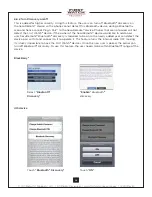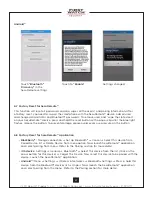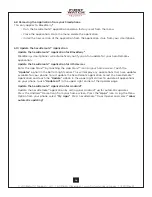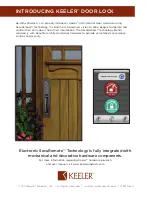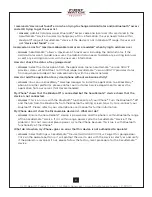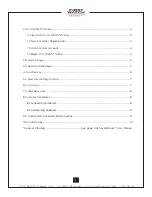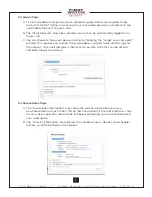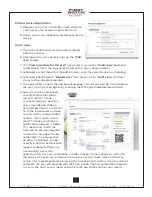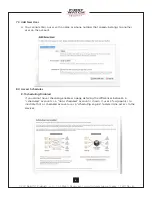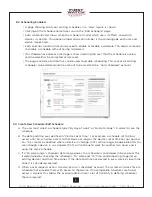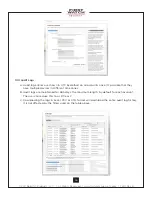
© 2011 Belwith
®
Products, LLC. | All Rights Reserved | www.firstwatchsecurity.com | 72211 Rev B
© 2011 Belwith
®
Products, LLC. | All Rights Reserved | www.firstwatchsecurity.com | 72211 Rev B
9
9
8.2 Scheduling Enabled
• A page showing all of your existing schedules, in a “card” layout, is shown.
• Clicking on the schedule name takes you to the “Edit Schedule” page.
• Each schedule card shows when the schedule is valid, which users it affects, and which
devices it controls. The phone number and serial number is shown alongside each user and
device respectively.
• Each card has a button that can be used to enable or disable a schedule. This allows someone
to disable a schedule without having to delete it.
• If a schedule has expired, a message is shown alerting the user that the schedule is useless
and should either be corrected or removed.
• The page contains a button that can be used to disable scheduling. This causes all existing
schedules to be deleted and the account to be reverted to a “non-scheduled” account.
9.0 Create New Schedule/Edit Schedule
A. The user must select a schedule type (“By day of week” or “By date range”) in order to save the
schedule.
B. The date and time are specified in “Device Local Time”. For example, a schedule set to allow
access until 9
PM
will allow access to that device as long as the device’s local time has not passed
9
PM
. This creates a condition where a device in Chicago (CST) will no longer be operable after 9
PM
even though a device in Los Angeles (PST) will continue to work for another two hours and is
using the same schedule.
C. If a “By date range” schedule’s date range passes, the schedule is considered to be expired. This
is determined by checking the schedule’s “To” date and “To” time and comparing it against all
existing devices and their time zones. If the date and time has passed in every device’s local time
zone it is considered expired.
D. When a user requests access to a device on a “scheduled” account, the system will check for any
schedule that provides them with access to the device. If no compatible schedules are found,
access is denied. This allows the account administrator a lot of flexibility in defining schedules
that are layered.

